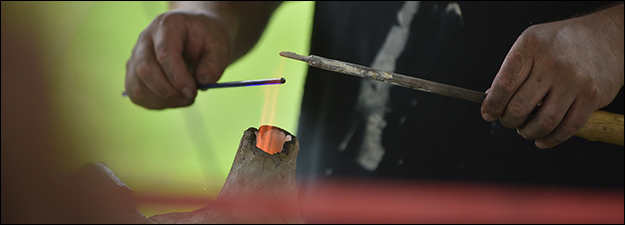Hermaphrodites: Genitalia, Gender, and Being Human in the Middle Ages (A Roundtable)
Sponsoring Organization(s)
postmedieval: a journal of medieval cultural studies
Organizer Name
Ruth Evans, Eileen A. Joy
Organizer Affiliation
St. Louis Univ., BABEL Working Group
Presider Name
Eileen A. Joy
Paper Title 1
Hermaphroditism and Liberation
Presenter 1 Name
David Rollo
Presenter 1 Affiliation
Univ. of Southern California
Paper Title 2
Sex and Genre: Disorienting the Place of Hermaphrodites in Pilgrimage Narratives
Presenter 2 Name
M. W. Bychowski
Presenter 2 Affiliation
George Washington Univ.
Paper Title 3
Talking Back: Sodomy Laws and Intersex Subjectivity in Medieval Venice
Presenter 3 Name
Alexander Baldassano
Presenter 3 Affiliation
Graduate Center, CUNY
Paper Title 4
The Hermaphroditic Soul in Medieval Art
Presenter 4 Name
Sherry C. M. Lindquist
Presenter 4 Affiliation
Western Illinois Univ.
Paper Title 5
"Wikked Wyves" and the "Secrets of Women": The Wife of Bath's Hermaphroditism
Presenter 5 Name
Wendy Marie Hoofnagle
Presenter 5 Affiliation
Univ. of Northern Iowa
Start Date
13-5-2016 3:30 PM
Session Location
Fetzer 1005
Description
Intersex today is a complex medical and cultural issue that challenges society’s fundamental ideas about sexual dimorphism and gender difference: how small does a penis have to be to be not clearly male? how large does a clitoris have to be to be not clearly female? Moreover, not all chromosomal variations result in perceptible genital ambiguity, and some sex anatomy variations do not show up until later in life. In late antiquity and the Middle Ages hermaphroditism was not highly medicalized as it is today. Rather, as a perverse figure of indeterminate or double sexuality, the medieval hermaphrodite reinforced not only sexual, but also religious and racial difference, troubling the borders between human/non-human, human/animal, human/monster, Christian/Jew, Christian/Muslim, Christian/heretic, and European/other. Hermaphroditic personifications in medieval texts remind us also of the imbrication of the sexual and the linguistic in medieval culture. Although the intersex person today and the medieval hermaphrodite have historically very different boundaries, and although there is no medieval memoir like that of Hercule/Herculine Barbin that would provide access (however limited) to the lived experience of the medieval hermaphrodite, it is important to keep open the question of the potential continuities between past and present bodies, genders, and sexualities, and to recognize the ways in which the historical figure of the hermaphrodite calls in question what we consider today to be natural or normal about genitalia, gender, and being human. This session invites short (10-minute) contributions on the medieval hermaphrodite.
Ruth Evans
Hermaphrodites: Genitalia, Gender, and Being Human in the Middle Ages (A Roundtable)
Fetzer 1005
Intersex today is a complex medical and cultural issue that challenges society’s fundamental ideas about sexual dimorphism and gender difference: how small does a penis have to be to be not clearly male? how large does a clitoris have to be to be not clearly female? Moreover, not all chromosomal variations result in perceptible genital ambiguity, and some sex anatomy variations do not show up until later in life. In late antiquity and the Middle Ages hermaphroditism was not highly medicalized as it is today. Rather, as a perverse figure of indeterminate or double sexuality, the medieval hermaphrodite reinforced not only sexual, but also religious and racial difference, troubling the borders between human/non-human, human/animal, human/monster, Christian/Jew, Christian/Muslim, Christian/heretic, and European/other. Hermaphroditic personifications in medieval texts remind us also of the imbrication of the sexual and the linguistic in medieval culture. Although the intersex person today and the medieval hermaphrodite have historically very different boundaries, and although there is no medieval memoir like that of Hercule/Herculine Barbin that would provide access (however limited) to the lived experience of the medieval hermaphrodite, it is important to keep open the question of the potential continuities between past and present bodies, genders, and sexualities, and to recognize the ways in which the historical figure of the hermaphrodite calls in question what we consider today to be natural or normal about genitalia, gender, and being human. This session invites short (10-minute) contributions on the medieval hermaphrodite.
Ruth Evans

